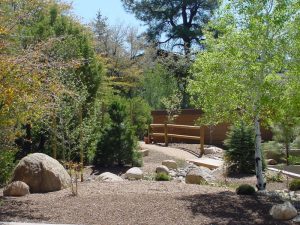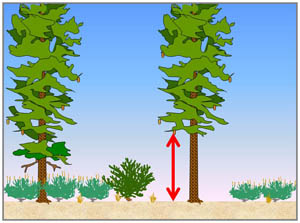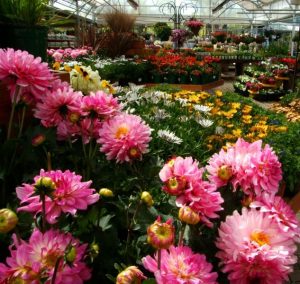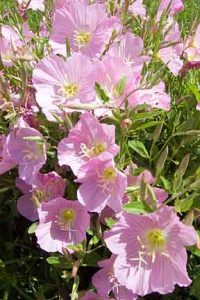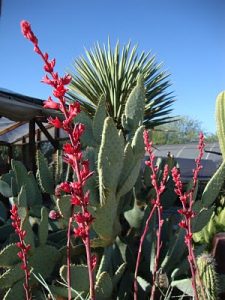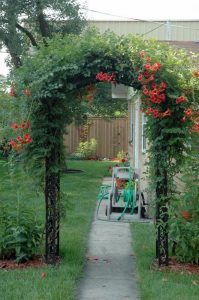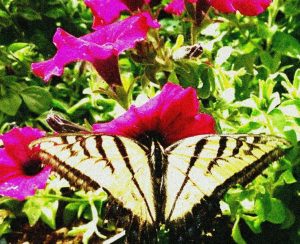 Butterflies have been magnificent this spring. I believe that these creatures are God’s gift to gardeners, and some of the most beautiful and interesting creatures in any garden. The reason so many butterflies are appearing in our gardens is that they are losing their natural habitats. The building of homes, roads, and farms in Arizona all contribute to the increased butterfly population in cultivated gardens. A butterfly garden is any area that is attractive to butterflies. Creating a piece of “butterfly bait” is an easy way to attract more butterflies for our enjoyment while improving their environment.
Butterflies have been magnificent this spring. I believe that these creatures are God’s gift to gardeners, and some of the most beautiful and interesting creatures in any garden. The reason so many butterflies are appearing in our gardens is that they are losing their natural habitats. The building of homes, roads, and farms in Arizona all contribute to the increased butterfly population in cultivated gardens. A butterfly garden is any area that is attractive to butterflies. Creating a piece of “butterfly bait” is an easy way to attract more butterflies for our enjoyment while improving their environment.
Gardening for butterflies is not only fun, but is the source of something beautiful and rewarding. It is easier than you might imagine to get these fairy-winged creatures to flutter your way. Butterfly larvae and caterpillars need plants for food, and adult butterflies need plant nectar. So, the ideal butterfly garden fulfills both of these requirements. It is simply a matter of choosing the right plants to attract them and then to encourage them to stay. Then you can sit back and let them entertain and amaze you.
Most inviting to butterflies are gardens with sunny areas sheltered from the wind, areas with garden mulch, rock crevices, brush piles, and yes, even some weeds. Because of the many different flowers in a good butterfly garden, it soon becomes a place of beauty. A butterfly garden can be any size: a window box, part of your landscaped yard, and even a wild untended area on your property.
Among the plants irresistible to butterflies and gardeners are:
Shasta Daisy – This perennial bloomer produces HUGE white flowers that are irresistible to anything with wings, and butterflies cannot stay away! The blossoms of this season-long bloomer have been exceptional this spring. A bonus characteristic of this popular plant is that rabbits, deer, and pack rats don’t care for this beautiful butterfly magnet.
 Coreopsis – The yellow flowers of this lush plant seem to glow in the garden even in the brightest light. This perennial never stops showing color all summer long. Hint: Shear the plant back with hedge clippers after each flush of blooms start to fade; it will spring into bloom all over again several times a year.
Coreopsis – The yellow flowers of this lush plant seem to glow in the garden even in the brightest light. This perennial never stops showing color all summer long. Hint: Shear the plant back with hedge clippers after each flush of blooms start to fade; it will spring into bloom all over again several times a year.
Phlox – Throughout the summer its large beautiful clusters of red, pink and lavender flowers will enhance its surroundings. Delivering years of perennial enjoyment the blooms bring their fragrance and sweetness to the delight of butterflies and humans.
Echinacea – If you have a sunny spot that needs planting, there are lots of reasons to grow a purple coneflower. Butterflies of many varieties love sipping its nectar, and it is very heat and drought tolerant. Also, because it blooms all summer long it’s the perfect addition to a cutting garden.
Anise Hyssop – There also are lots of reasons to grow anise hyssop. Deer and rabbits leave it alone. Like the echinacea it is heat and drought tolerant, and blooms for weeks in late summer. Also, it’s a good source of cut flowers, and, of course, butterflies love it.
Salvia – There’s a salvia for every garden: some salvias are tall, others are short; some salvias have blue or purple blooms, and others have red, orange, or pink flowers. While you might have trouble choosing a salvia, the butterflies won’t – rest assured that whichever salvia you plant they’ll flock to it every summer.
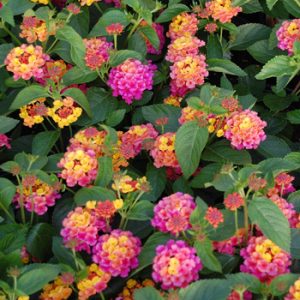 Miss Huff Lantana – Colorful is the definition for the flowers of this lantana. It blooms all summer long in glowing shades of lavender, pink, red, orange, yellow, cream, and white. A versatile plant, it looks perfect in containers or beds or borders. Butterflies will agree – this lantana is an outstanding addition to your garden.
Miss Huff Lantana – Colorful is the definition for the flowers of this lantana. It blooms all summer long in glowing shades of lavender, pink, red, orange, yellow, cream, and white. A versatile plant, it looks perfect in containers or beds or borders. Butterflies will agree – this lantana is an outstanding addition to your garden.
Pentas – An all-around garden champion, pentas bears clusters of star-shaped blooms in bright shades of pink, red, and white. It loves hot conditions, holds up to drought pretty well, and is a sure bet for attracting butterflies and hummingbirds looking for a snack.
Zinnia – Just about everyone loves zinnias, which is why they’re favorites of butterfly gardeners, cottage gardeners, and beginning gardeners. It blooms in an almost endless range of colors and, whether outdoors or in a vase, it looks good all summer long.
Black-eyed Susan – This tough perennial blooms in late summer. Its big, yellow, daisy-shaped flowers are as perfect for bouquets as it is for butterflies.
Fennel – This is the plant for adding texture to a garden. It’s also a surefire way to attract swallowtail butterflies, whose caterpillars munch on the fennel’s ferny foliage.
Verbena – This plant is perfect for cut bouquets because its blossoms will not be depleted. The more you cut, the more it blooms, guaranteeing a supply of lavender-purple blooms at the ready for butterflies to enjoy, too.
 The entire list of butterfly attractor plants will be posted on my Facebook page at www.facebook.com/watters1815. If you are not a Facebook fan, a one page hard copy version will be available free for the asking when you visit the garden center this week.
The entire list of butterfly attractor plants will be posted on my Facebook page at www.facebook.com/watters1815. If you are not a Facebook fan, a one page hard copy version will be available free for the asking when you visit the garden center this week. 
Gardening Class – June 15 is the first of a series of free summer classes for gardeners. Held in the comfort of Watters’ greenhouse, classes begin at 9:30 every Saturday morning. On the 15th the topic will be: “Bountiful Vegetable Gardens Sure to Produce”. At the June 22 class students will learn how to create “Containers that Bloom like Crazy”. Check out the entire summer schedule at www.wattersgardencenter.com/category/classes.
Until next week, I’ll see you in the garden center.
http://wattersgardencenter.com/2013/calling-all-butterflies/ Calling All Butterflies!
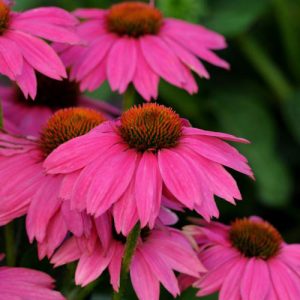 Berry beautiful and berry prolific, this ruby toned echinacea beauty produces a floriferous flurry of huge 4” raspberry rosy flowers with a darker center. This outstanding new variety is the winner of the garden acclaimed AAS award. Taking the ribbon by the skin of its pedals for the continuous flower show even through the heat of summer. Full-bodied, wellbranching 20” plants require little deadheading or upkeep and loves the heat.
Berry beautiful and berry prolific, this ruby toned echinacea beauty produces a floriferous flurry of huge 4” raspberry rosy flowers with a darker center. This outstanding new variety is the winner of the garden acclaimed AAS award. Taking the ribbon by the skin of its pedals for the continuous flower show even through the heat of summer. Full-bodied, wellbranching 20” plants require little deadheading or upkeep and loves the heat.